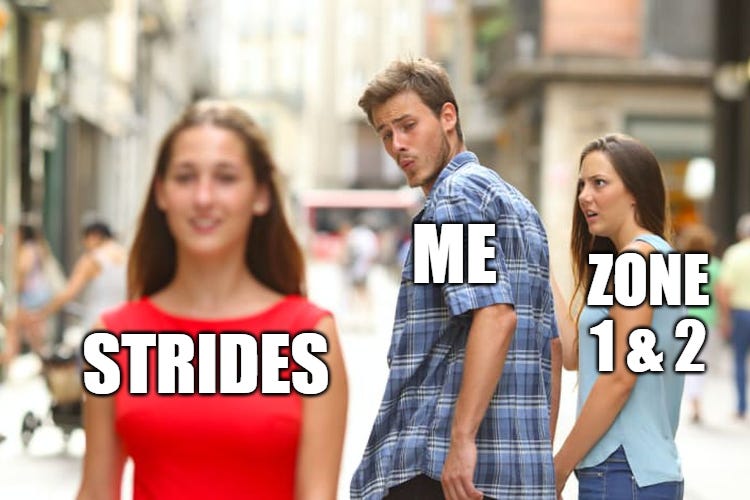Strides: What, When, Where, Why
Running is an aerobic activity.
You’re relying on your aerobic system to provide sustained energy during long-distance running by using oxygen to convert carbohydrates, fats, and proteins into ATP. By doing so, it supports your endurance endeavor by delivering a continuous supply of energy. It is the base of your running economy, what most of your training should be focused on in terms of getting faster for longer…initially.
There comes a time when the need to train other systems within your body arises. The need for this comes when a runner’s aerobic base starts to inflate racing ability. Think “I can run for hours, but cannot race very long/fast”. I have seen this with my own eyes! An athlete who can run a marathon, but struggle at top speeds from 400m all the way through a 5K.
It’s also a big reason why new runner’s (who aren’t past athletes) do not perform well during their first race. The ability to output power is simply not there, although their aerobic system may be well trained. The opposite can be true of past athletes, where they have no problem outputting power, and are actually quite fast at first over shorter distances.
It’s extremely complicated, with many different systems being involved, along with the entire training philosophy of strides being a positive feedback loop to increase your running economy.
Let’s dive in!


